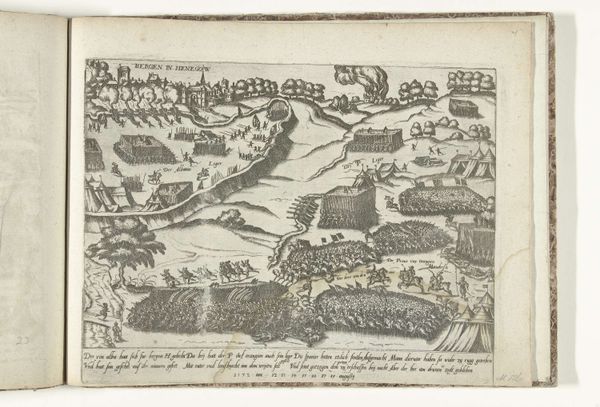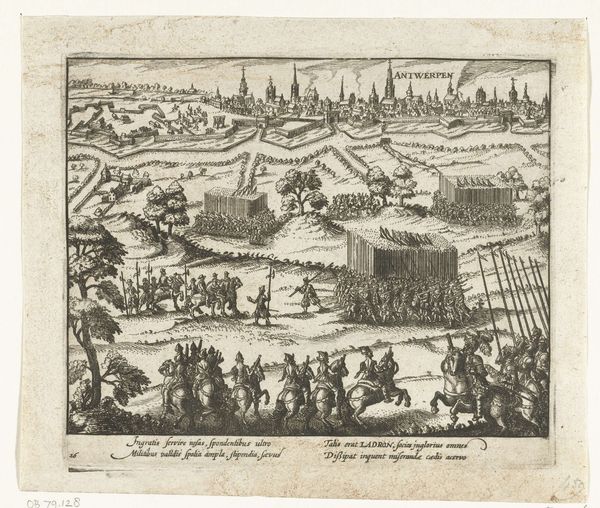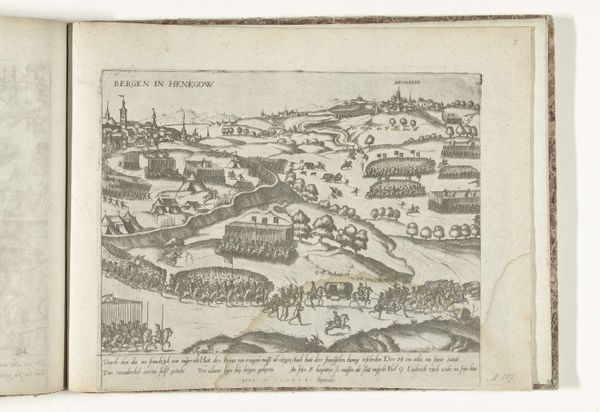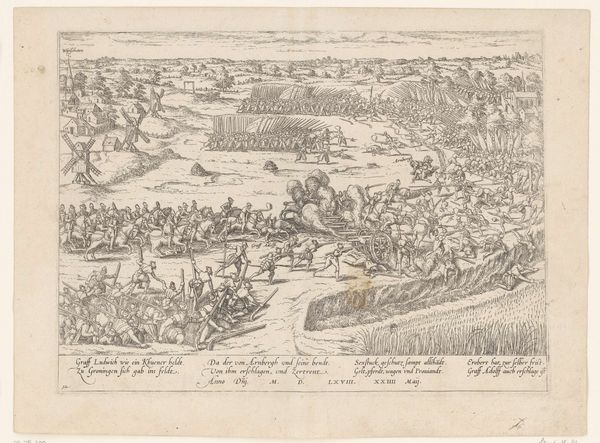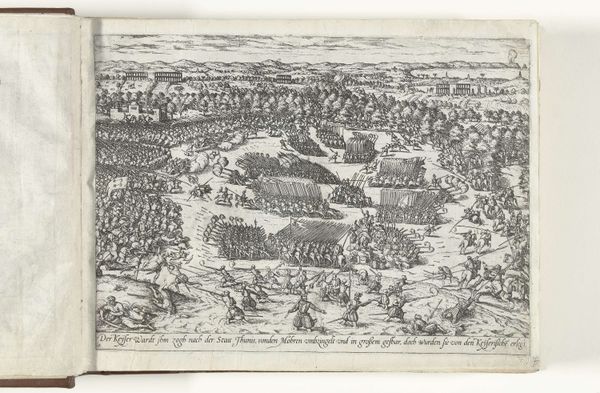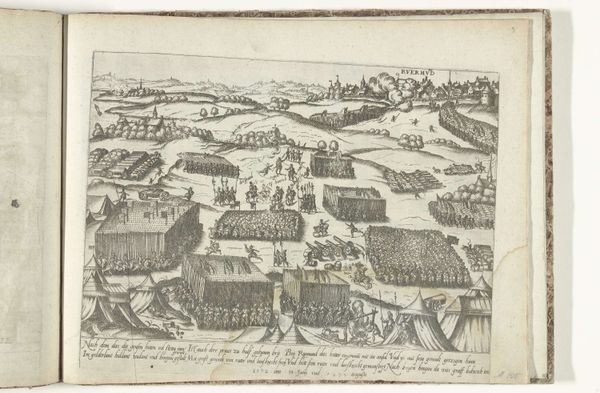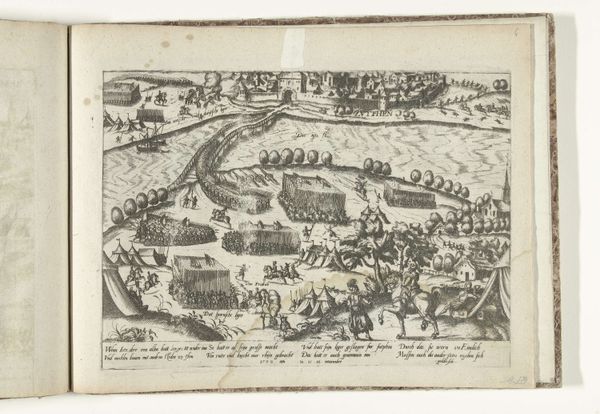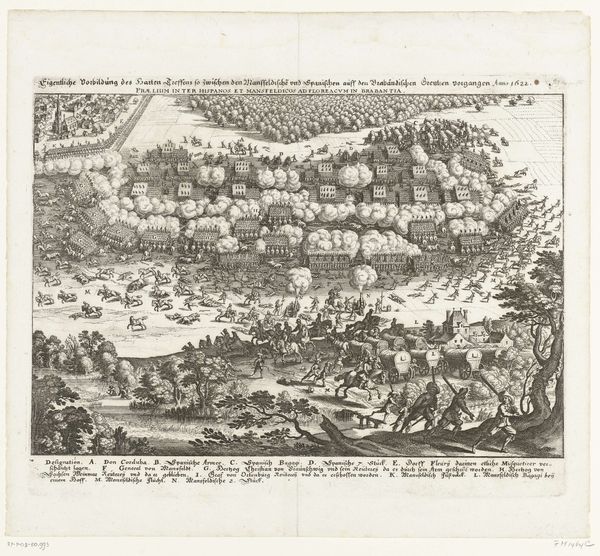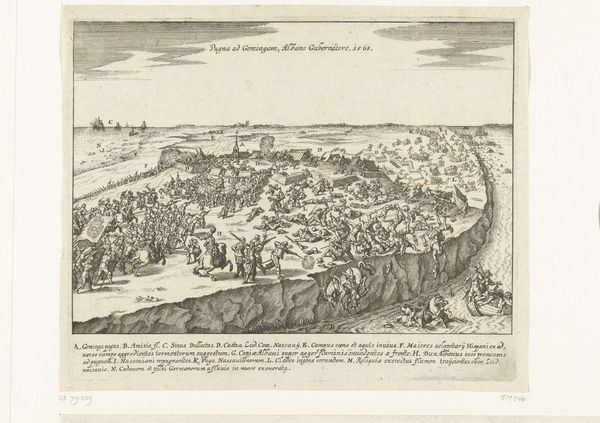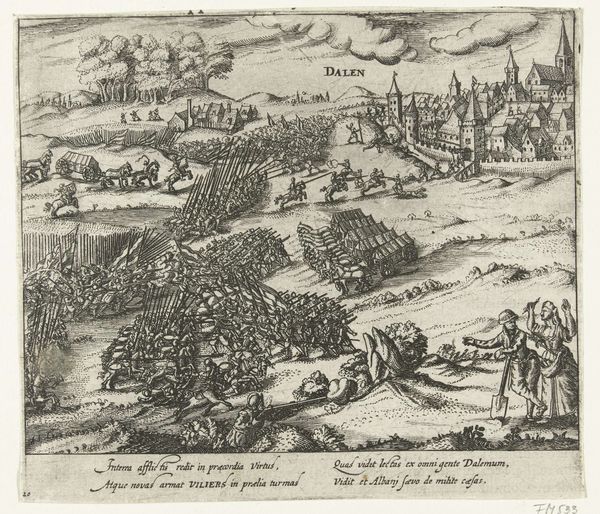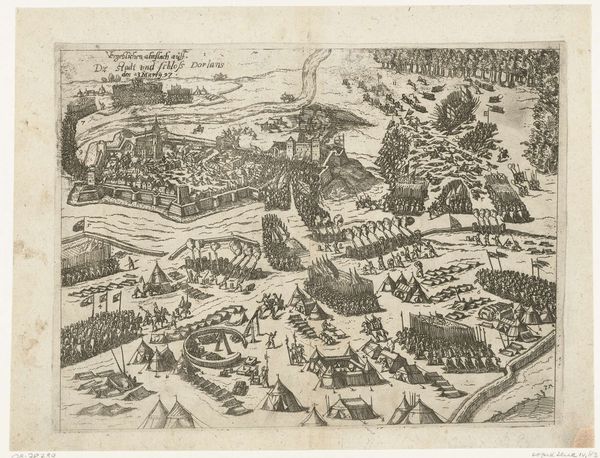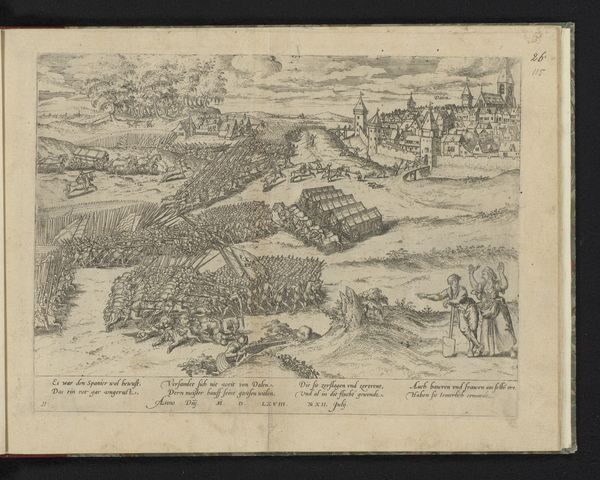
print, engraving
# print
#
landscape
#
history-painting
#
northern-renaissance
#
engraving
Dimensions: height 240 mm, width 310 mm
Copyright: Rijks Museum: Open Domain
Editor: So, this is an engraving titled "Watergeuzen nemen Den Briel in, 1572," made between 1572 and 1574, by an anonymous artist. The detail is incredible for such a small print. What's most striking is how the landscape almost feels secondary to the sheer density of figures. How would you interpret this work, considering its materiality as a print? Curator: This print offers a fascinating lens through which to examine the intersection of art, propaganda, and the nascent Dutch Republic. Consider that engravings were relatively inexpensive to produce and distribute. This image of the Watergeuzen taking Den Briel, therefore, wasn't just a depiction of an event; it was a tool. A tool in what sense? Editor: To sway public opinion? To depict this military victory? Curator: Precisely! And more. Think about the labor involved. The engraver, painstakingly cutting these lines into a metal plate, is participating in the construction of a national narrative. The "Watergeuzen," or Sea Beggars, were essentially pirates fighting for Dutch independence. How does that complicate our view of the print's social context? Editor: It makes it more than just art. It’s a product of its time, pushing a specific agenda tied to resources and production. The accessibility of prints means the narrative could reach a much broader audience than a painting could. Curator: Absolutely. It's also important to note the role of patronage here, who was paying for this print to be made and distributed and for what end purpose. Editor: That definitely gives me a lot to think about. I was so focused on the image itself, that I overlooked the wider production process. Curator: Seeing art as embedded within material conditions and social processes always complicates, but ultimately enriches, our understanding.
Comments
No comments
Be the first to comment and join the conversation on the ultimate creative platform.
